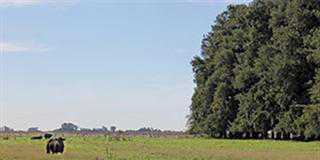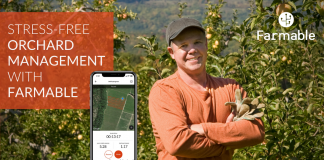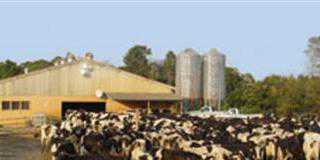Agritourism has grown substantially from 2% of the tourism industry in the Western Cape in 1996 to 10% of the foreign tourist market currently. For most farms, tourism contributes between 2% and 30% to farm income. Johan Keller speaks to Glenneis Erasmus about managing and marketing a guest house in the Little Karoo.
Unfavourable market and production conditions are forcing farmers to look for ways to diversify risks and enhance farm cash flow. Johan Keller, who farms with his dad Piet and brother Viljee at De Denne and Mooiplaas outside Oudtshoorn in the Little Karoo, had to seriously re-evaluate farm sustainability following the avian flu outbreak a few years ago. The outbreak led to a ban on ostrich exports – their primary source of income at the time – even though this disease did not affect any birds in the region.
In response to the outbreak, Johan diversified farm production from ostriches, lucerne and lucerne seed to include dairy and Bonsmara cattle. Two years ago he added further value to the business by boldly entering the ecotourism market.
Jam-packed tourist destination
Starting an agritourism enterprise is capital-intensive. De Denne had a few old buildings dating back more than hundred years. These buildings had to be renovated to their former glory. At the moment, four buildings that accommodate 16 people are available, either on a bed and breakfast or self-catering basis. A camping site near the farm dam for tourists who are interested in an outdoor experience is also on the cards. The self-catering units are equipped with modern amenities, such as air conditioning, a bar fridge, TV, hairdryer, tea- and coffee-making facilities, microwave and a hotplate. Each unit has a private entrance and braai facility.
De Denne’s tourist activities include bird watching, mountain biking and scenic walks. Daily environmental and farm tours to watch ostrich chicks hatching have also become very popular. Surrounding attractions include ostrich show farms and wine farms, 4×4 trails, the Cango Caves, Cango Wildlife Range and mountain biking up the Swartberg.
Johan also has his heart set on building a golf course on the farm. Tourist spectrum round 90% of the visitors are from the EU, and more specifically from the UK and northern European countries such as Poland and Germany. Tourists from New Zealand, Australia and the US have also stayed at the farm. According to Johan, most of the visitors usually book to stay at the farm for one night, but within a few minutes upon arrival decide to prolong their stay. Johan ascribes this to hospitality. “We treat our guests like friends, and sit and chat with them. They’re not used to this type of warmth and I think they enjoy the close contact with people from the country they are visiting.
Hospitality definitely is one of the key drivers of the success of any tourist destination.” Johan says tourists find it difficult to fathom the vast space in the Little Karoo. Many of them sit on the stoep or under trees and just stare into the openness for hours and hours. They also enjoy being on a working farm where they see workers going about their tasks – milking cows, feeding the ostriches and harvesting lucerne.
Most tourists love animals and they enjoy playing with the domesticated farm animals. Visitors are often surprised at the farm’s level of racial integration. Johan believes the interaction between workers from different races, and, in turn, their interaction with the tourists have established a positive image of South Africa‘s agriculture industry.
New-age marketing
As part of De Denne’s marketing strategy, Johan has had the website www.dedenne.com designed. This real-time website allows people to check the availability of rooms and make bookings on the website or via e-mail. The effectiveness of real-time is dependent on whether information is updated by the hosts on a regular basis, says Johan. At a cost of R150 per month, he uses real time supplied by Nightbridge.
De Denne’s website is linked to other websites. Linking websites, such as AA Travel, Safari Now and Rooms for Africa, includes having a description and/or photo of an establishment, or a direct link to the establishment’s website on the internet. Some of the websites have maps of South Africa. The end-user clicks on the intended destination and the map will then link with more specific information about the destination and potential places to stay. These websites either charge commission on the number of users who end up booking and staying at a specific guest house, or they charge a fixed rate for the service.
Johan says it usually takes around three years for a new entrant to make its mark in the tourism industry, and before travel agencies become interested in doing business with a new establishment. Once a booking is made, an e-mail is sent to Johan. To make the sale, he responds as quickly as possible. Prospective visitors supply their credit card details via a secure network over the internet. This helps to prevent hackers from abusing credit card information. A deposit is required with each booking.
The guest house’s income is quite significant compared with that generated from primary farming activities. Johan says tourism has increased cash flow during difficult months and it has created new jobs on the farm. “Through the guest house I have built wonderful relationships with people worldwide. I am flooded by invitations to come visit them in their countries.” Contact Johan Keller on 083 236 3456 or e-mail [email protected]. |fw












